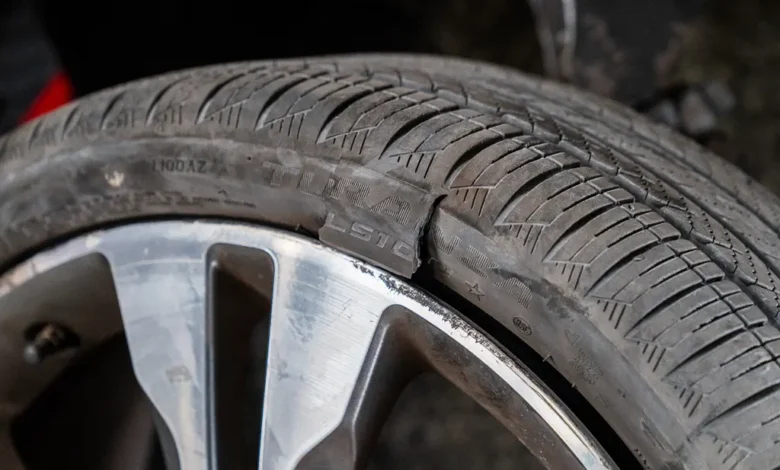Technology That Spots Tire Defects: A Game Changer for Rollover Prevention

Most drivers rely on their tires every day without realizing how critical they are to vehicle safety. These essential components are the only point of contact between a car and the road, making their condition a top priority. A single defect, whether from wear and tear or a manufacturing flaw, can lead to dangerous situations, including rollover accidents. Thankfully, new technologies are transforming how tire defects are identified, helping drivers avoid accidents before they occur.
These advancements are more than just helpful—they’re life-saving. Detecting potential issues early allows drivers to avoid expensive repairs, improve road safety, and enjoy peace of mind while traveling. Whether you’re on a short commute or a long journey, these technologies ensure that your tires are reliable and your drive is secure. Understanding how these systems work can empower drivers to make smarter choices and avoid unnecessary risks.
Understanding the Causes of Tire Malfunctions
Tire defects can result from various factors impacting performance and safety. Here are the most common causes to be aware of:
- Manufacturing Errors- Faulty materials or mistakes during production can create structural weaknesses. These defects increase the risk of blowouts or tread separation.
- Poor Maintenance- Neglecting tire care, such as driving with improper inflation or skipping regular rotations, accelerates wear and reduces lifespan. Proper upkeep is essential for reliability.
- Challenging Road Conditions- Debris, potholes, and uneven surfaces can damage tires over time. Repeated exposure to harsh conditions weakens their structural integrity.
- Extreme Temperatures- Excessive heat or freezing cold can cause tires to expand, contract, or lose flexibility. These temperature changes contribute to cracking and other issues.
- Aging and Wear- Tires naturally degrade over time, even with minimal use. Regular inspections help identify when aging rubber or worn treads require replacement.
The Link Between Tire Defects and Rollover Accidents
Tire defects play a significant role in rollover accidents, especially in vehicles with a high center of gravity, such as SUVs and trucks. When a tire fails due to a blowout or tread separation, the sudden imbalance can cause the vehicle to tip and roll. This type of accident often happens during sharp turns, emergency braking, or high-speed maneuvers.
Drivers can reduce their risk of rollovers by staying vigilant about tire health. Regular maintenance, combined with new monitoring technologies, ensures that potential problems are addressed before they escalate. With these measures in place, drivers can feel more confident in their vehicle’s stability and overall safety.
Advanced Technologies for Detecting Tire Defects
Modern tire monitoring systems are changing the game when it comes to safety and maintenance. These technologies use sensors to measure air pressure, temperature, and tread depth, providing real-time data to drivers. Advanced systems even incorporate artificial intelligence to analyze patterns and predict when a tire is likely to fail.
The integration of these technologies into vehicles has made it easier than ever to catch small issues before they grow into dangerous problems. Drivers now have access to tools that keep them informed and prepared, reducing the chances of unexpected accidents caused by tire failure. These innovations are a critical step forward in road safety.
Early Detection Saves Lives and Costs
The ability to detect tire issues early provides a range of benefits, from enhanced safety to reduced expenses. Identifying problems such as low tread or air pressure before they lead to failure helps drivers avoid blowouts and loss of control. This proactive approach is particularly vital for preventing accidents on highways, where tire failures can have severe consequences.
Early detection also extends the lifespan of tires and improves fuel efficiency. Properly maintained tires reduce rolling resistance, allowing vehicles to consume less energy. Taking advantage of these benefits allows drivers to save money while promoting a safer driving experience.
How Tire Technology Reduces Rollover Risks
One of the most important applications of tire-monitoring technology is its ability to prevent rollover accidents. Continuously monitoring the status of each tire, these systems alert drivers to potential issues in a timely manner. Promptly addressing these alerts can help prevent situations that could lead to a rollover.
This technology is especially valuable in cities like Las Vegas, where rollover car accidents are unfortunately common. Innovations in tire defect detection are proving to be a critical tool in reducing the risk of rollover car accidents in Las Vegas, helping drivers stay safe on the road and avoid life-threatening situations.
Legal Implications of Tire Defect Accidents
Tire defects don’t just pose safety risks—they can also lead to legal challenges, particularly when a defect is caused by manufacturer negligence. Victims of accidents caused by defective tires may have the right to seek compensation for medical bills, lost wages, and other damages. Knowing your legal rights is essential in these situations.
For drivers affected by rollover car accidents, consulting with experienced legal professionals can make a significant difference. Legal experts can guide you through the process of filing claims and ensure that you receive the support you need after such a traumatic event.
Simple Steps Drivers Can Take for Tire Safety
Maintaining tire safety is essential for a smooth and secure driving experience. Here are simple steps every driver can follow:
- Inspect Tires Regularly
Check your tires for visible damage, such as cracks, bulges, or uneven tread wear. Regular inspections help catch potential issues before they escalate. - Maintain Proper Inflation
Keep your tires inflated to the manufacturer’s recommended pressure. This improves handling and fuel efficiency and reduces the risk of blowouts. - Rotate Tires as Needed
Regular tire rotations ensure even wear, extending the lifespan of your tires. Follow your vehicle’s recommended schedule for the best results. - Choose High-Quality Tires
Invest in tires designed for your vehicle and driving conditions. Quality tires enhance performance and provide better safety. - Use Modern Monitoring Tools
Utilize tools like tire pressure monitoring systems (TPMS) to keep track of tire health. These technologies make maintenance easier and more effective.
The Future of Tire Defect Detection
As technology evolves, tire-monitoring systems are becoming even more advanced and accessible. Researchers are working on new innovations, such as self-repairing tires and blockchain-based maintenance records, to further improve safety and reliability. These cutting-edge solutions aim to eliminate the risks associated with defective tires entirely.
The future of tire safety looks promising as these advancements continue to roll out. Drivers will benefit from smarter systems that provide deeper insights into tire performance, reducing the likelihood of accidents and making roads safer for everyone. With these technologies, a safer driving experience is just around the corner.




